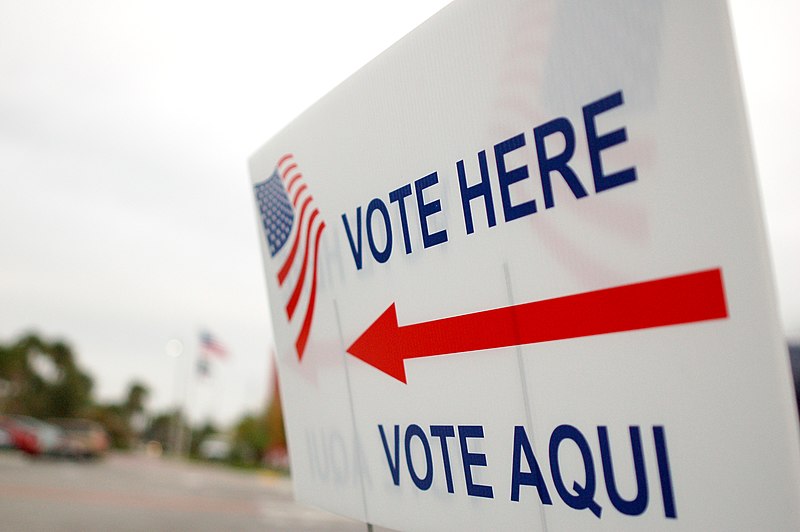A 12-Step Rehabilitation Program for American Election Administration
This post offers a 12-step program to address the most significant administrative challenges exposed in the 2020 election.

Published by The Lawfare Institute
in Cooperation With

The American election system was challenged over the past year to a degree unseen in its history. Any one of these challenges—voting during the coronavirus pandemic, the blunderbuss pursuit of fabricated claims of vote fraud in courts and state legislatures in five states, the effort to exclude legally cast electoral votes by members of Congress and the insurrection at the Capitol—would have posed an existential threat to democracy in America.
Of these challenges, the post-election actions taken by President Donald Trump, his campaign, and some of his supporters posed the most profound threat to our system of government. It is natural, and correct, to expect those who conspired to overthrow the constitutional transfer of power to be held accountable for their actions through the full energies of the federal government.
Still, elections continue. Even if attempts had not been made to delegitimize the outcome of the election, the conduct of the election poses questions for how to ensure resilience in the future. With the benefit of 2020 hindsight, government officials at all levels have the opportunity to reflect on the adaptations made during the pandemic and ask which should be retained and which should be treated as one-off expedients. What did and didn’t work?
Thinking about potential improvements to U.S. elections should in no way suggest that the American public should under-appreciate the phenomenal accomplishments of election administrators during the 2020 election. In March, many people were asking whether we would even have an election in November. In November, we learned that the election was the “most secure in American history[,]” and the vast majority of Americans who cast a ballot expressed satisfaction with what they experienced.
The biggest problem of this election was the willingness of citizens to use violence to reject the outcome of the election, abetted by President Trump’s amplification of the most outlandish claims of widespread voter fraud. The distrust of the electoral process will likely take years to overcome.
The partisan divisions that have developed over the administration of elections will make legislative action to improve future elections difficult. However, it is imperative that legislators act now to remedy the problems that were evident in the past election, rather than wait until the next one.
Transformational reforms are included in the updated H.R. 1, which addresses election administration issues such as voter registration, voting rights, and election security, and H.R. 4 from the 116th Congress, which would revive the Voting Rights Act. Some have urged passing a constitutional amendment protecting the right to vote. While those more fundamental reforms will receive much deserved attention, this post offers a 12-step program to address the most significant administrative challenges exposed in 2020. In addressing administrative solutions, this program also attempts to promote voter confidence and provide some remedies for the most notorious problems that election officials encounter.
1. The fiscal needs of election administration must be addressed. Even in the best of times, election administrators operate under fiscal stress that can, in a crisis, quickly become a threat to election security. Election officials pulled off a credible election in 2020, in part because many different actors helped fund necessary changes to ensure safe and healthy voting. It is both embarrassing and tragic that private philanthropy provided more money than the federal government for local election administration in 2020. These private donations will not be a reliable source of funds in the future; election officials should not be put in the position of having to hold “bake sales for democracy” to keep the polls open. The federal and state governments need to put their heads together to develop sustainable funding models so that elections can proceed as planned when the unexpected occurs.
2. States should establish clear frameworks for dealing with elections under emergency conditions. When the rules are changed for elections at the last minute, suspicions are naturally aroused. Voting amid the coronavirus pandemic showed that public safety and health can potentially necessitate a shift in the rules or delay an election. Some states have well-developed statutes that explicitly address the governor’s authority to address emergencies that affect elections, but most do not. Before the next emergency besets an election, states should make sure that their laws clearly dictate who can waive features of state election law under emergency circumstances.
3. Partnerships forged between election officials and social media companies need to become permanent. When emergencies arise, election officials must clearly communicate the authoritative information their voters need. In a world with fewer local media outlets, voters turn to the internet to find critical information. But the results that ordinarily rise to the top of a Google search might not be relevant to local circumstances. In this environment, social media and internet platforms have a positive role to play in directing voters to authoritative information. This past election, both Facebook’s Voting Information Center and Google’s Civic API set a good precedent. These companies need to ensure that the measures they took in 2020 to avoid the embarrassments of 2016 are part of a permanent strategy of amplifying the voices of local election officials—both to confront disinformation and to educate citizens with facts about voting in their communities.
4. States should enact comprehensive postelection audit programs, anchored by risk-limiting tabulation audits. Almost every state requires a postelection audit of the election results from a small sample of precincts after the election, but the mandated methods are typically antiquated. There are more robust ways to check the tabulated results of an election. Risk-limiting audits, which were on display in Georgia, provide the most efficient and statistically sound method for ensuring that the winner declared was the winner. Three states now mandate risk-limiting audits, and more are moving in that direction. States also need to go beyond simply auditing vote tabulations. All aspects of election administration that involve data—from voter registration to the assignment of voters to precincts—also need to be audited.
5. States and localities should provide more opportunities for citizens to observe vote counting without interfering with the counting itself. This country has a long tradition of guarding the integrity of the election through a system that can be called “many eyes on the process.” All states have provisions for public observation of voting and counting, but some are more inclusive than others. As evidenced by this past election, there is confusion about how the observation process works in many places. The role of observers in each locality should be explained more thoroughly, but technology can also make the process more transparent. Livestreaming of ballot counting, as some localities do, not only makes tabulation more transparent but also facilitates public exposure to election offices that are physically smaller and more compact.
6. States need to ensure that the deadlines associated with mail balloting match the realities of the United States Postal Service’s (USPS’s) service standards. This year, the American public learned that many states have deadlines for requesting absentee ballots that set up voters to fail. In addition, a great controversy arose over whether ballots could be received after Election Day. Depending on the state, voters can request a mail ballot in person, online or by mail. States need to adjust their deadlines to ensure that there is enough time for voters to request, receive, vote and return a mail ballot in time for it to be counted. Congress should mandate, at the very least, that the USPS guarantee the on-time delivery of any domestic mail ballot with regular postage put in the mail the Saturday before Election Day.
7. Acknowledge that the USPS is a critical component of every state’s election system. The USPS is now an integral part of election administration throughout the nation: Half of Americans who voted in the 2020 election voted by mail, and nine states mailed ballots to all registered voters. And yet this past election season’s controversies associated with the postal service show that its crucial role in the electoral process has not been integrated into the thinking of most members of Congress or the upper management of the USPS. The USPS’s role in elections should be like that of the rest of the election administration apparatus—above partisanship. Congress and the postal service’s top management must work to ensure that the USPS meets the needs of local election officials who rely on it to conduct safe and secure elections.
8. States should encourage the use of drop-off locations for the return of mail ballots. Drop boxes became one of the flash points of election administration in 2020. Different states and even different localities within states maintain different rules as to where voters can drop off mail ballots, apart from USPS mailboxes and facilities. For voters, drop-off locations represent convenience, security, and an assurance that their ballot was actually received. For skeptics, drop boxes are honeypots for ballot harvesters. States that used vote-by-mail even before the 2020 election understand that drop-off locations can be well positioned to serve large numbers of voters and that their use is a best practice that achieves both convenience and security. States that are new to drop boxes and skeptical of their use can mandate security features that will reassure election officials and the public. Among several measures, states can require that surveillance cameras cover drop boxes and that the boxes are anchored to permanent features, such as lamp posts and buildings.
9. All states should implement ballot-tracking software for mail ballots. Maintaining a credible chain of custody of absentee ballots is one of the challenges of using the mail in elections. Voters have long questioned if the ballot they stuck in the mail would actually be received and counted. To address the twin concerns of security and confidence, all states should participate in programs that allow mail ballots to be tracked from the point they are mailed from the election office to the receipt at the voter’s home and then back to the election office to be counted. The 2020 election saw an explosion in the use of ballot-tracking programs such as BallotTrax and Ballot Scout, or home-grown systems. All states should get on board the tracking train.
10. All states should have uniform standards to handle deficiencies of absentee ballots. A small number of ballots—between 1 and 3 percent in most states—are rejected because of some technical problem with the paperwork that accompanies the returned ballot. Experienced election officials know that almost all of these problems are due to honest mistakes made by legitimate voters, not fraud. All states should establish systems to reach out to voters whose mail ballots are in jeopardy of being rejected and give them a short, but reasonable, window of time to cure those deficiencies—similar to the requirements of provisional ballots. Controversy arose in 2020 when some counties within some states implemented an active absentee ballot “cure” process, while others didn’t. The answer to this within-state variability is not to ban election officials from helping voters correct innocent mistakes, but to “level-up” by requiring that they all do so.
11. Congress and the states need to update applicable laws to handle disputes concerning presidential elections. Presidential elections are different from most other elections because of the hard deadline for reaching finality in counting ballots. It is rare, but not unheard of, for election disputes to continue past the date when the term of office begins for state and local races. (As of late January 2021, the outcome of the House election for the 23rd District of New York is still in dispute, and no one has been sworn in to take the seat.) The U.S. Constitution does not allow for this with presidential elections. Yet most state election dispute laws treat the presidential election the same as any other. National political forces will focus on local courts when they take up the question of a disputed presidential election. With that in mind, states should consider creating both dedicated tribunals of experienced judges to consider these complaints and expedited timelines for settling disputes over presidential elections. In addition, Congress must update the Electoral Count Act of 1887 to reflect current realities. Passed shortly after the invention of the telephone, the law reads as if it were written by Lewis Carroll. It provides ambiguous directions respecting the roles of legislatures, governors and Congress. Its deadlines also may not be appropriate in the event of a major shift to mail balloting. A bipartisan commission should be established to update the law and to clarify that state legislatures cannot overrule the will of voters expressed at an election.
12. States should declare Election Day a school holiday. In most of the country, public schools remain the most convenient and accessible of facilities to host voting on Election Day. The pandemic saw a decline in the availability of schools to host polling places in some states, causing election officials to scramble to find replacements and voters to be uncertain about where to cast their ballots. In a long-term trend, public schools have been taken off the table as polling places owing to understandable concerns about the safety of students. The obvious solution is for local school systems to declare Election Day a break from instruction, so that election departments can use cafeterias, gymnasiums and assembly rooms to host voting.
The 12 administrative suggestions in this post should not detract from the need for more fundamental reform to guarantee easier and equal access to the voting. Except for the items addressing the postal service and the ECA, these are all steps that can be followed without federal action, although the passage of some provisions of H.R. 1 (especially funding) could help them along. Given the result from the Georgia Senate runoffs, Democrats now control the Presidency and both houses of Congress, so that transformational reform may, indeed, be possible.
The reform ideas suggested here, however, would improve the security and convenience of voting and have the potential to garner support from both Democrats and Republicans. More pragmatic and evidence-based approaches to improving elections in the short term will serve both voters and the health of American democracy. Election reformers should not try to satisfy the fringes of American politics. Even if an increased share of the public is implacable in believing elections are rigged against their party, common sense reforms that can secure greater access for voters and clearer guidance for campaigns and election officials might help the U.S. prepare for the next challenging election. Election officials’ success in administering the 2020 election during unprecedented pandemic challenges should be rewarded with reforms that invest in the strength and security of American democracy.




.jpg?sfvrsn=d8787e74_5)

